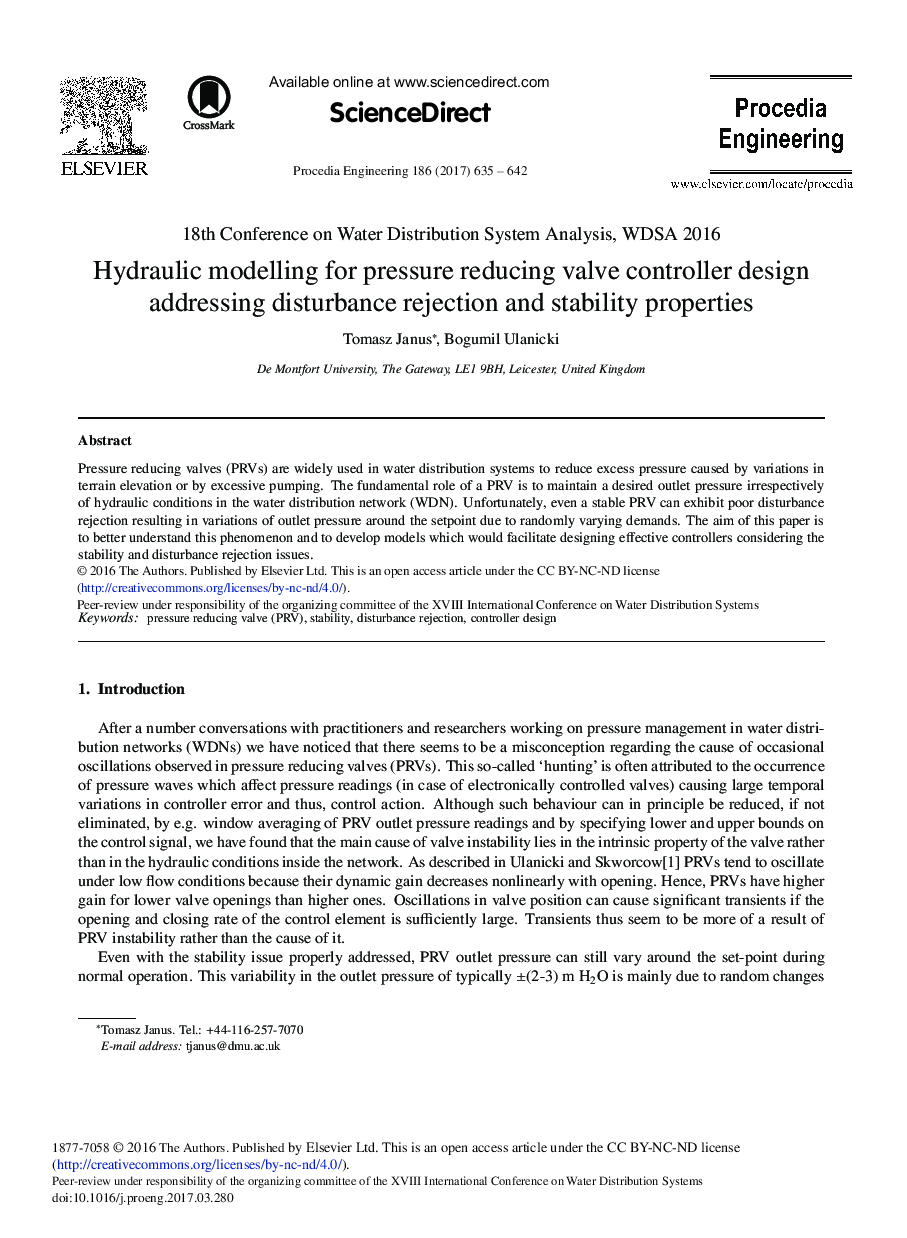| Article ID | Journal | Published Year | Pages | File Type |
|---|---|---|---|---|
| 5028263 | Procedia Engineering | 2017 | 8 Pages |
Abstract
Pressure reducing valves (PRVs) are widely used in water distribution systems to reduce excess pressure caused by variations in terrain elevation or by excessive pumping. The fundamental role of a PRV is to maintain a desired outlet pressure irrespectively of hydraulic conditions in the water distribution network (WDN). Unfortunately, even a stable PRV can exhibit poor disturbance rejection resulting in variations of outlet pressure around the setpoint due to randomly varying demands. The aim of this paper is to better understand this phenomenon and to develop models which would facilitate designing effective controllers considering the stability and disturbance rejection issues.
Related Topics
Physical Sciences and Engineering
Engineering
Engineering (General)
Authors
Tomasz Janus, Bogumil Ulanicki,
